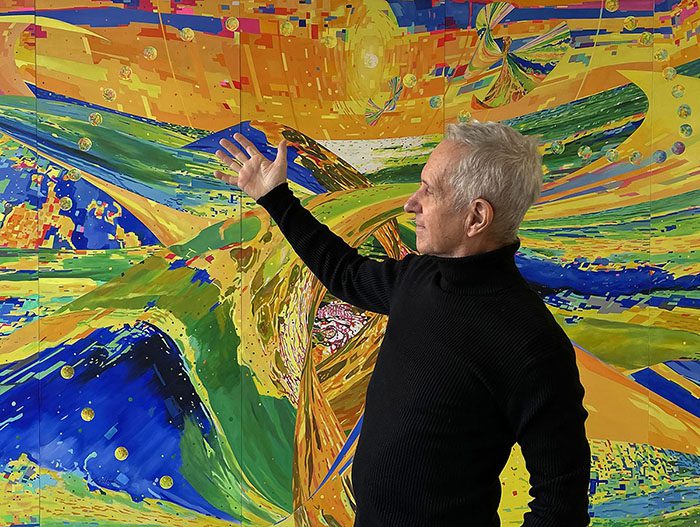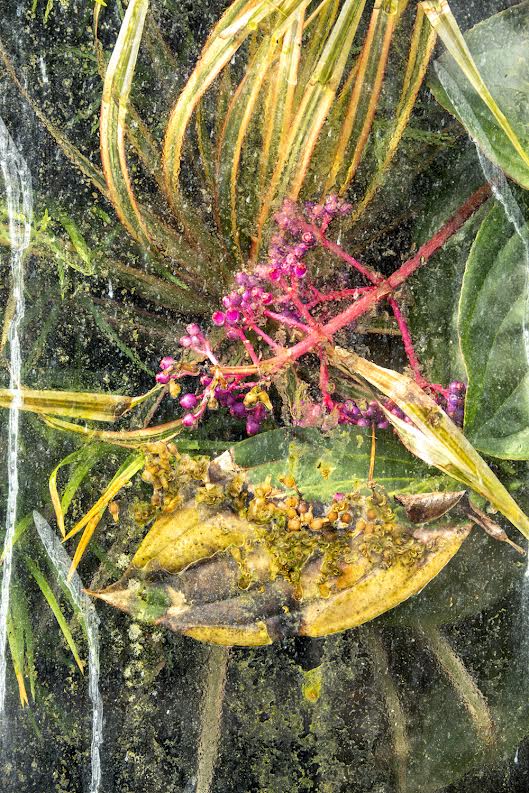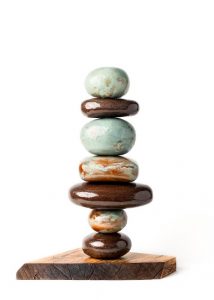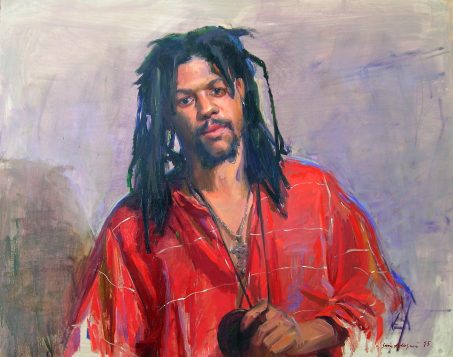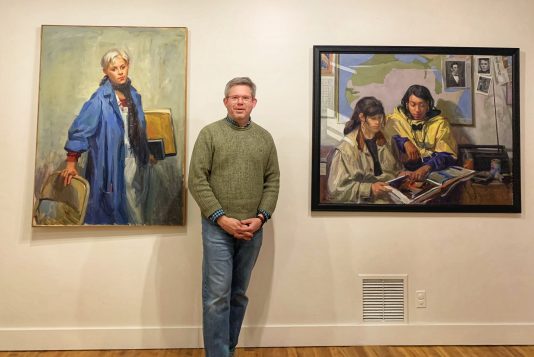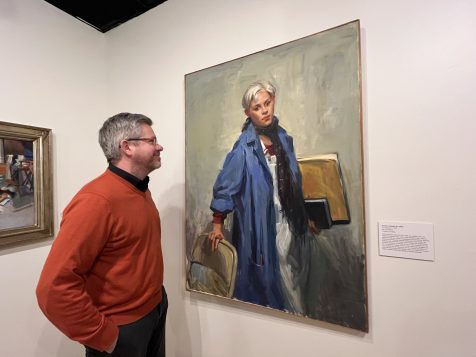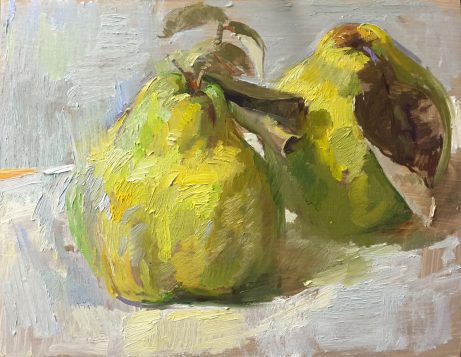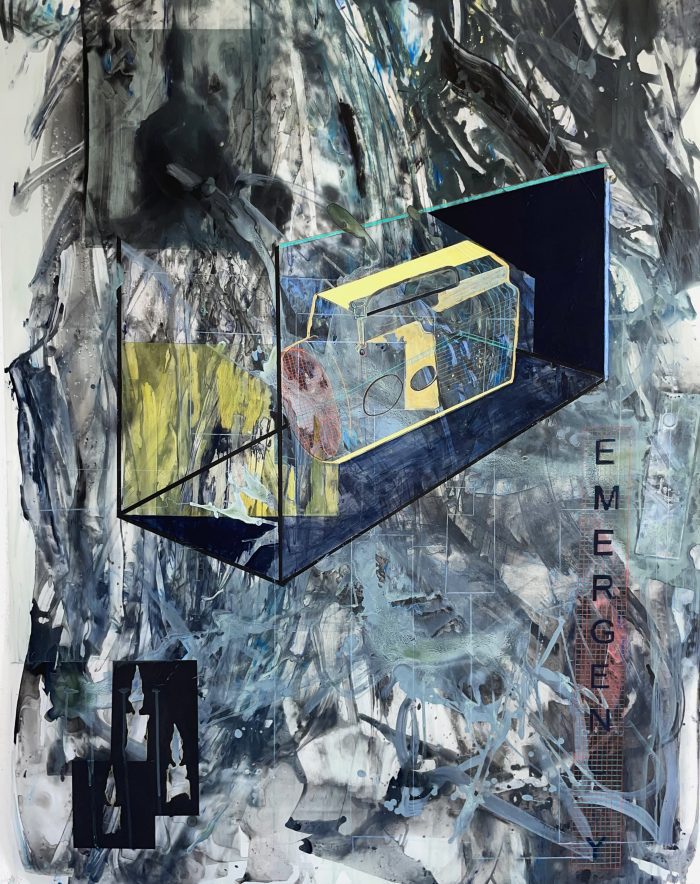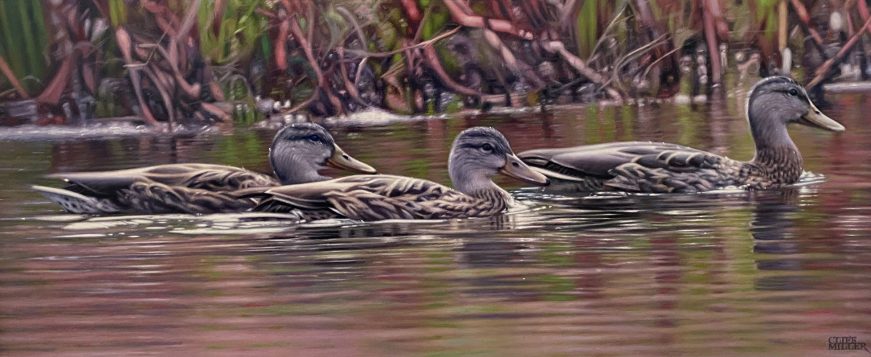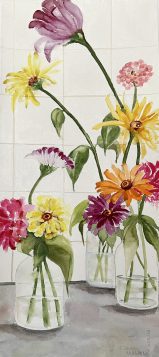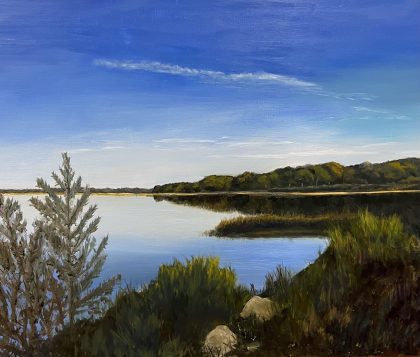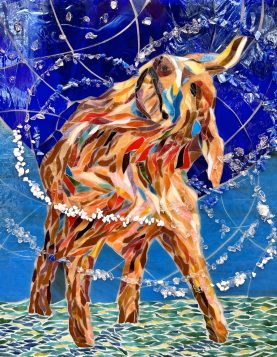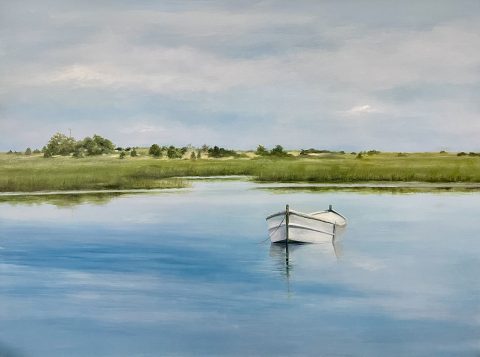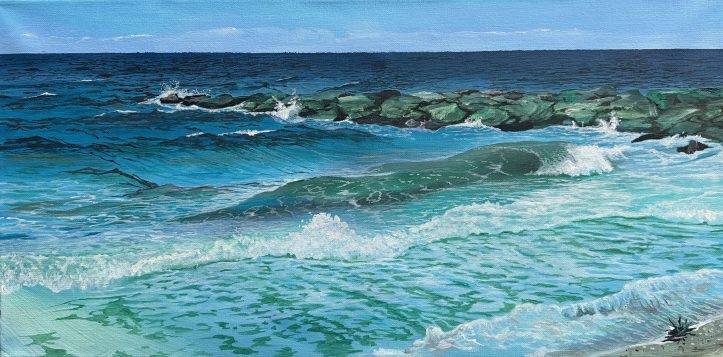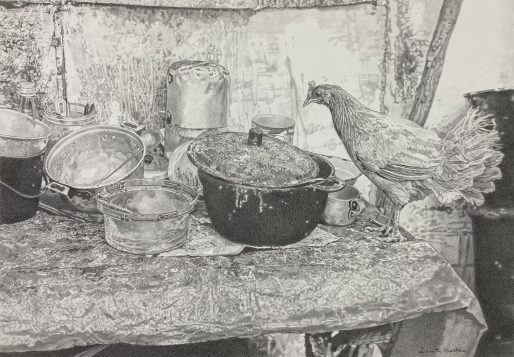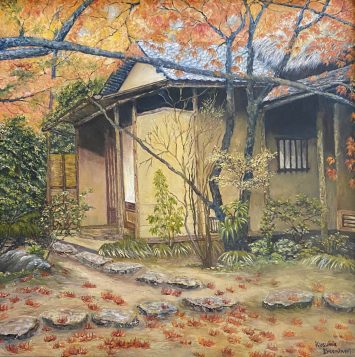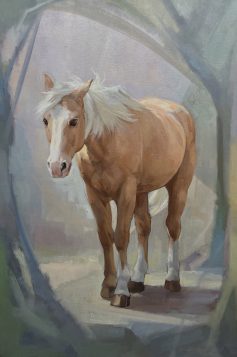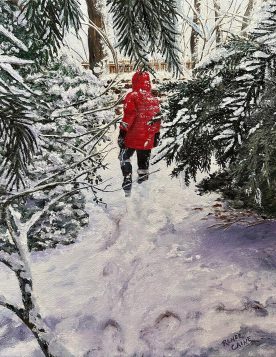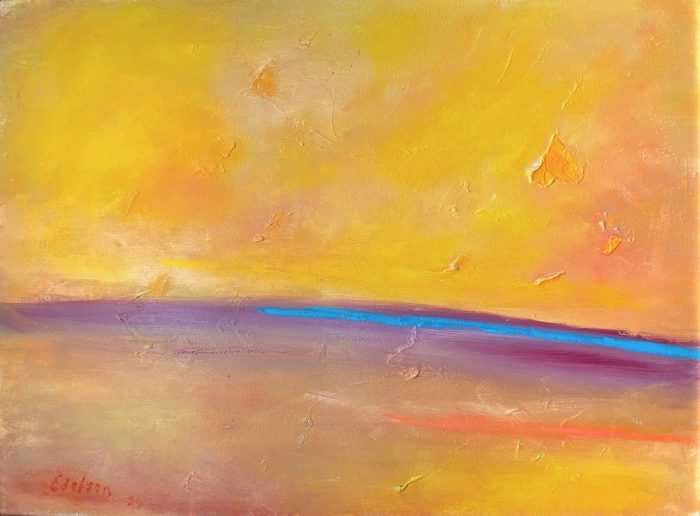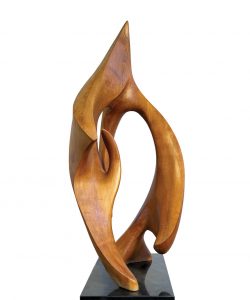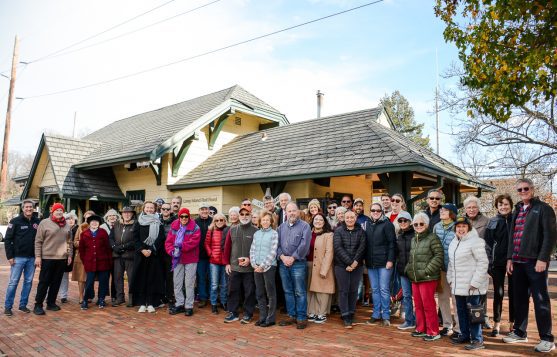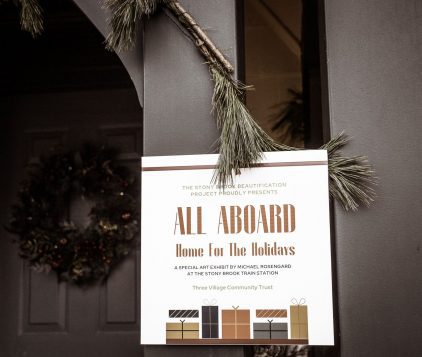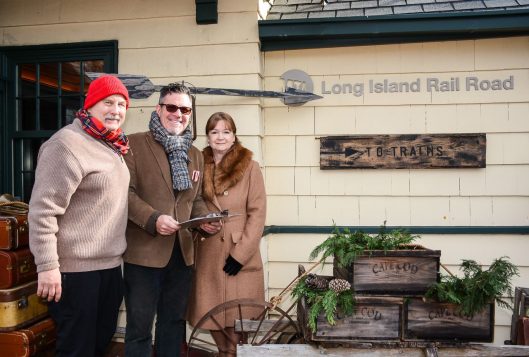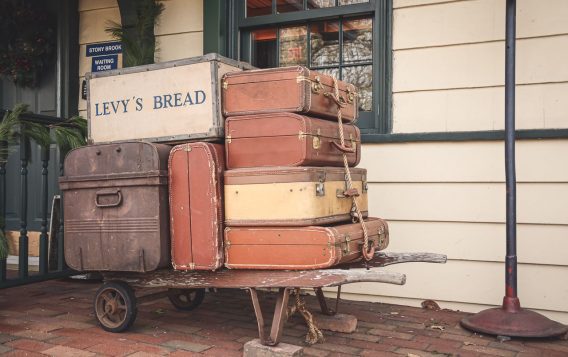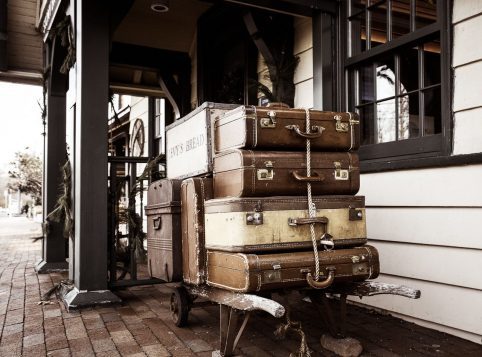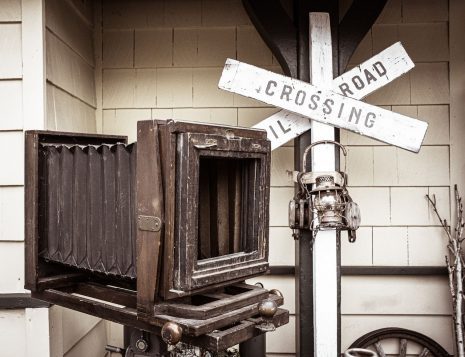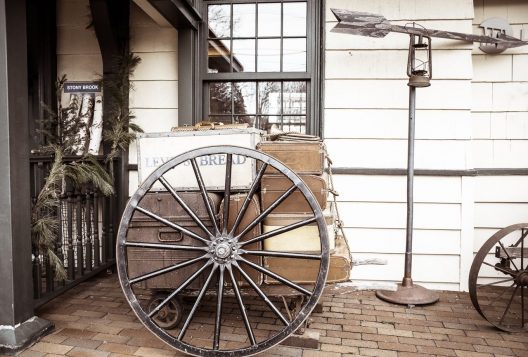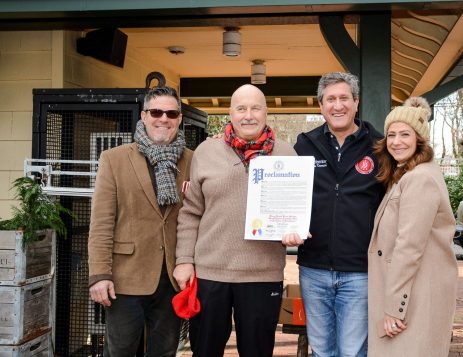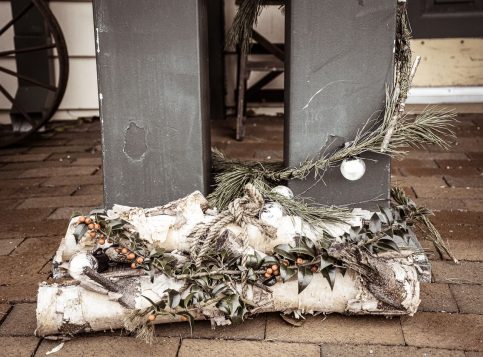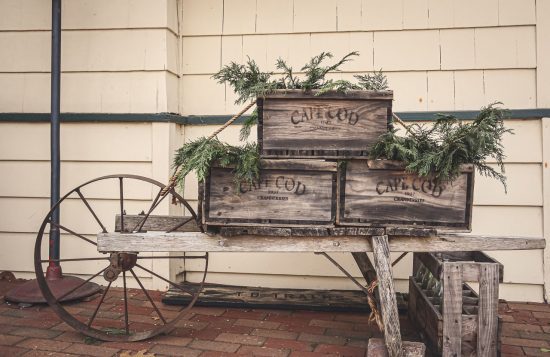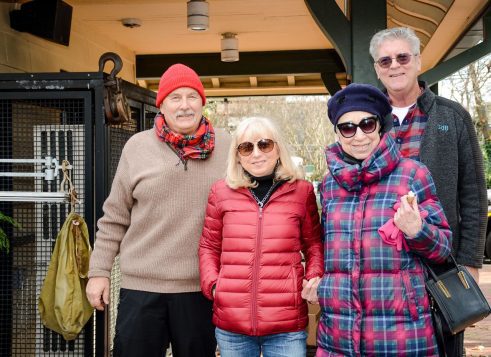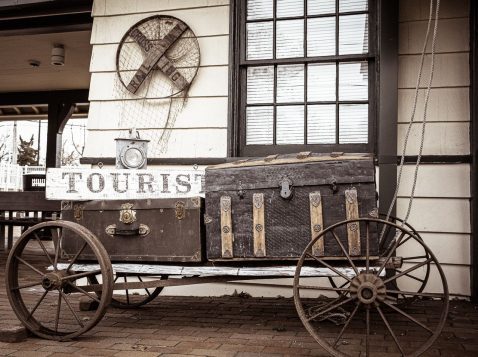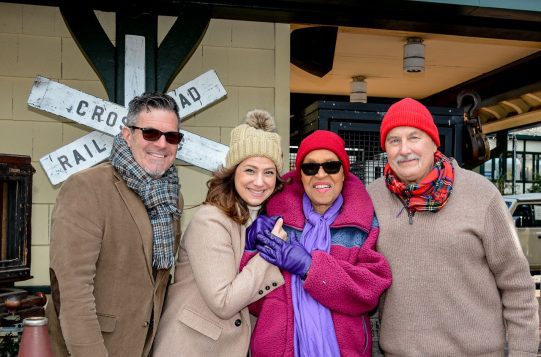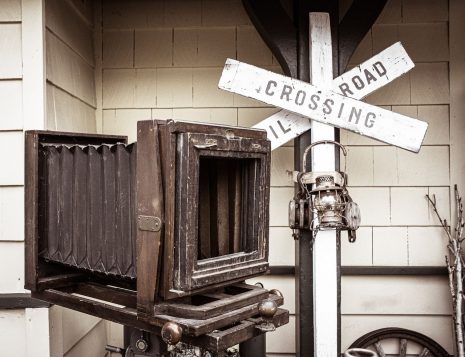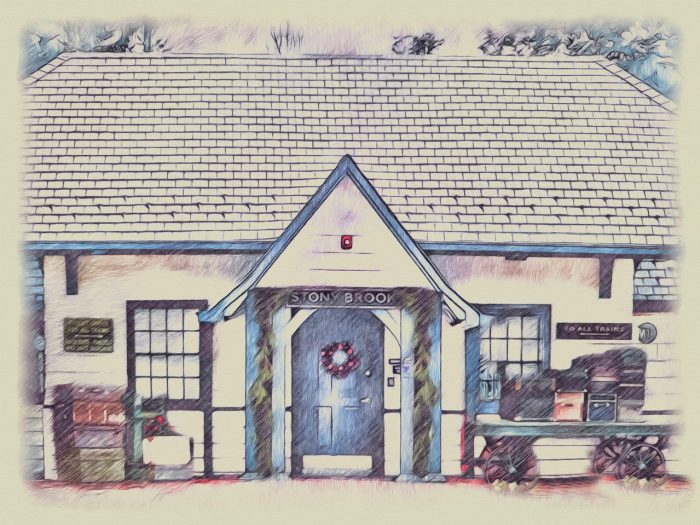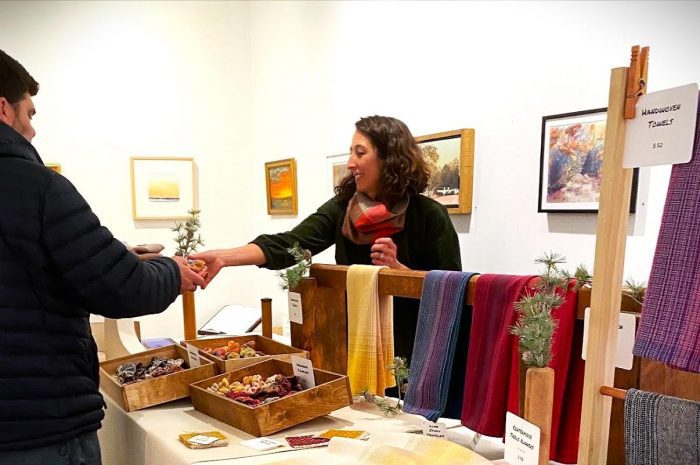By Tara Mae
Perspective and reality merge in imagination, creating art that is tethered to truth and yet unfettered from realism. Finding Hidden Treasures: The Art of Sam Adoquei, a retrospective of the artist’s oil paintings, explores the scope of such interplay.
On view at the Long Island Museum (LIM) in Stony Brook through June 2, the show features 25 oil paintings of various sizes as well as an excerpt of The Unseen Beauty (2012), a film written and directed by Gabriel de Urioste about Adoquei and his work.
The entire exhibit is a milestone for Adoquei.
“It is the first time in my life to have my large figurative works and small paintings, my traditional pieces and my outdoor oil paintings, my still lifes and my figurative pieces come together in the same room. It is also interesting to see some of my earliest paintings next to some recent canvases,” he said in an email. “Same with technique/approach: there are paintings that were approached with the most careful traditional/classical method while some of the canvases were approached with fun spontaneous innovative spirit.”
Finding Hidden Treasures reveals scenes of certainty and surprise, calmly tranquil or intensely evocative. During a recent guided tour of the exhibit before it goes on view to the public, I was immersed in a world of soothing still lifes, inviting landscapes, and compelling figures.
For Adoquei, a Ghanaian immigrant who is also a writer and teacher, oil painting is a language through which he communicates, inviting viewers to enmesh themselves in the core of the work and the feelings they invoke.
“Oils provide that unlimited range of expressing myself: from the leanest and thinnest effects to the thickest layers of impasto pigments,” Adoquei said.
In many ways, the show is a reflection and meditation on moments in time, both simple and profound. It is an intimate invitation to become acquainted with new characters and reintroduced to uncommon elements of common knowledge.
“Sam is very ambitious to be taking on some of the subjects he takes on, like these sort of massive scale history paintings. Then there is the sensitivity that he has in his figurative and portrait work, the expressiveness, the fact that you look at the people in the paintings, you feel a connection,” said LIM’s Co-Executive Director Joshua Ruff.
Such a kinship is formed via a shared visual dialogue between artist and audience. The paintings in this exhibit entice the breadth of human emotion in what they depict and what they evoke.
“My approach is diverse: traditional, innovative…Creating a painting to me is always communication with the enthusiasts: whether short and poetic, a short essay, or long and epic depends on the subject and what I aim to extract from it,” he added.
Two of the most arrestingly captivating pieces in the exhibit combine narrative tradition with creative interpretation: a 10-foot-wide triptych titled “The Legacy of Martin Luther King Jr. (The Entombment)” which was featured in the New York Times and displayed at the S. Dillon Ripley Center of the Smithsonian Institution in Washington, DC., and “Death of a President (John F. Kennedy).” These history paintings reimagine hauntingly human tragedies with interpersonal, even fantastical, elements.
In these renderings, persons from the artist’s life, as well as Adoquei, appear as bystanders or sympathetic participants. Adoquei frequently includes himself or his associates in his paintings, a practice that adds emotional depth to the works.
“I love people, I am always inspired by the love of people, and humanistic pursuits are part of sentiments that I try to include in my mission to unveil my vision,” he said.
This generosity and warmth extends to pieces that do not include human figures, like idyllic interpretations of Long Island vistas and other settings. They encourage onlookers to step into them, feel the sand beneath their feet, the breeze as it rustles tall grasses, the sun on their faces, the sound of the sea, the taste of salt in the air.
Adoquei’s still life paintings are intriguing and alluring, alluding to larger stories of which patrons are only catching a glimpse: two quinces with their stems and leaves attached, lilting sunflowers and daisies in vase, a partially sectioned grapefruit, with what appears to be a thumbprint left on the endocarp.
“All that I do is inspired by nature, life and living, and the needs of the future. Turning nature and people into beautiful timeless paintings to inspire others inspires me daily,” Adoquei said. “As lives, works, and legacies of great minds took me from oceans and cultures away and offered me the support to create art that hangs on museum walls and in private collections, so do I hope to create meaningful timeless art worthy of inspiring future generations.”
Versatility of technique underscores the scope and impact of Adoquei’s subject matter. His art contains and honors a multitude of human experiences, including his own journey from Ghanaian art student, to sign and billboard painter in Nigeria, and then working artist, educator, and author in the United States, where he arrived in 1987.
Adoquei’s paintings welcome patrons to participate in moments fraught and freeing, stunning and serene. Finding Hidden Treasures is an opportunity for artist and art appreciators to enter the field of humanistic imagination.
“I have never seen this collection of my paintings exhibited together, and knowing they wouldn’t be in the same room together again, I hope art lovers of Long Island will take advantage of the opportunity to come enjoy them at The Long Island Museum,” Adoquei said.
Also on view at the Long Island Museum:
Painting Partnership: Reynold and Joan Ruffins in the Art Museum from Feb. 8 to June 30
Organized in conjunction with The Power of Two (see next exhibit), this exhibition presents a unique story of love, creativity, and art. Sharing 60 years of marriage and settling in Sag Harbor in 1992, Painting Partnership features close to 25 paintings and sculptures from the remarkable artistic duo, Reynold Dash Ruffins (1930-2021) and Joan B. Young Ruffins (1932-2013). Reynold began making his mark in graphic and advertising design in the 1950s and the 1960s, later working on such publications as The New York Times Magazine, Gourmet, and Essence, and creating award-winning illustrations for children’s books. Meanwhile, as Joan raised the couple’s four children, she created a studio in the family’s St. Albans home, creating art and teaching both children and adults.
The Power of Two: Artist Couples of Long Island in the Art Museum from Feb. 8 to June 30
Experience the dynamic interplay of creativity as The Power of Two: Artist Couple of Long Island exhibition showcases over 50 artworks comparing and contrasting the work produced by 14 artist couples of Long Island. From the 1880s to contemporary couples today, this exhibition provides a captivating insight into the collaborative spirit of artist partnerships.
Colors of Long Island in the History Museum from Feb. 8 to April 7
This year marks the 25th Anniversary of the Annual Colors of Long Island Student Art Exhibition, a show that affords an opportunity for hundreds of students from across Long Island to display their artwork in a museum setting. Art teachers from public and private schools in grades pre-k through 12th grade were invited to submit up to two pieces of student artwork that capture the essence of the region’s landscapes, history, and cultural diversity through various mediums including watercolor, sculpture, pencil, ink, oil pastel, photographs and computer graphics.
Located at 1200 Route 25A, Stony Brook, the Long Island Museum is open Thursday through Sunday from noon to 5 p.m. Admission is $10 for adults; $7 for seniors (age 62 and older); $5 for students (ages 5-17, and college students with an ID); $3.50 for persons with disabilities (personal care assistants are free); and, free for active and retired military personnel. For more information, call 631-751-0066 or visit www.longislandmuseum.org.

